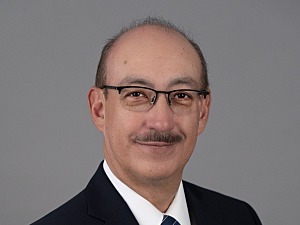Brigham and Women’s Hospital has adopted a new approach to providing diabetes care for Latino (LatinX) and Hispanic patients that involves embedding diabetes specialists in community clinics and offering culturally appropriate services to help patients control their disease and related complications.
The new model for care is spearheaded by A. Enrique Caballero, MD, director of Latino Diabetes Health in the Division of Endocrinology, Diabetes and Hypertension. His work developing comprehensive models of diabetes care for the Latino/Hispanic community has earned widespread recognition since he founded the Latino Diabetes Initiative at the Harvard-affiliated Joslin Diabetes Center (JDC) in 2002. Recently, for example, he received the American Diabetes Association’s Outstanding Educator in Diabetes Award for his work with the Latino population and his leading role in professional education.
“Despite meaningful advances in diabetes care, we are falling short in helping many patients achieve treatment targets,” Dr. Caballero says. “This burden is particularly taxing among Latino and Hispanic populations and leads to increased risk of complications and comorbidities.”
Delivering Diabetes Care Closer to Home
Dr. Caballero transitioned from the JDC to the Brigham in 2018 and decided to establish his practice at the Brigham’s Southern Jamaica Plain Health Center, which is in a culturally diverse neighborhood with many Spanish speakers. There, he sees patients during routine appointments with their Brigham primary care providers and supplies targeted education, outreach services, and research opportunities that would otherwise be difficult or impossible for patients to access.
His presence in the clinic gives Dr. Caballero the opportunity to guide the clinic’s primary care providers on how to better assess and treat patients with diabetes. It also supports a multidisciplinary, collaborative approach that allows him to stay closer to patients’ other health needs and improve the management of chronic diseases like diabetes.
“Ninety percent of diabetes care is delivered by primary care providers, and many health systems require patients to travel to a main campus for specialty care,” Dr. Caballero says. “The Brigham has made a commitment to reducing health disparities among underserved populations by bringing that care closer to home and involving the entire care team, including primary care providers, nurses, dieticians, social workers, educators, pharmacists, and population health specialists.”
Care at Dr. Caballero’s clinic also feels closer to home for Latino patients because all providers on staff are fluent Spanish speakers. Furthermore, Dr. Caballero conducts all his patient encounters in Spanish, which leads to enhanced provider-patient concordance, better engagement, more authentic conversations, and more productive interactions. Patient education materials are linguistically and culturally appropriate to help patients better understand and comply with treatment and lifestyle recommendations.
Patient Management Plans Consider Social Determinants of Health
To further reduce diabetes care inequalities in the Latino community, Dr. Caballero’s initiative combines the latest evidence-based strategies for diabetes care with a focus on social determinants of health (SDOH). He says this area has been long neglected in diabetes care.
“Traditionally, the physician’s role has been to make a diagnosis, recommend a treatment, and send the patient along their way,” Dr. Caballero says. “We are moving beyond that approach by talking with patients about the financial, societal, cultural, emotional, and family support factors that influence their behavior so we can be more effective in helping them reach their treatment goals.”
For example, while healthier eating is a first-line recommendation for diabetes patients, many underserved patients are food insecure and struggle to afford or access healthy food (especially if they live in a food desert, where residents have limited access to affordable, nutritious food providers). A doctor’s recommendation to exercise more may be unattainable for those who can’t afford a gym membership or find welcoming fitness facilities. Compliance with medication protocols may prove difficult for patients who lack adequate insurance coverage.
To address these SDOH issues, members of the clinic’s multidisciplinary team talk to patients about free and reduced-cost nutrition, exercise, and medication assistance programs.
“While the science of caring for diabetes patients with new technologies and new medications continues to move forward, it is not the whole solution,” Dr. Caballero says. “We also need to focus on the art of caring for diabetes patients by addressing their social, cultural, emotional, and economic concerns. Everyone at the Brigham is committed to working against health disparities and doing the best possible job of acknowledging these social determinants of health.”
